Design, Fabrication, and Modeling of a Novel Dual-Axis Control Input PZT Gyroscope
Abstract
:1. Introduction
2. Conceptual Design of a Dual-Axis Actuation and Position Measurement Piezoelectric Gyroscope
2.1. Mode Shape Analysis
2.2. Electrode Design
3. Simulations of Device Performance
3.1. Driving and Sensing Capability in X-Axis
3.2. Driving and Sensing Capability in Y-Axis
3.3. X-Axis and Y-Axis Driving Simultaneously
3.4. Simulation of Angular Rate Measurements
4. Device Fabrication
5. Experimental Results
5.1. Dynamic Measurement
5.2. Calibrations of Dynamics
5.3. Sensitivity of Angular Rate Measurement
6. Discussion
7. Conclusions
Author Contributions
Conflicts of Interest
References
- Nasiri, S. A Critical Review of MEMS Gyroscopes Technology and Commercialization Status; InvenSense: San Jose, CA, USA, 2001. [Google Scholar]
- Shkel, A.M. Micromachined Gyroscopes: Challenges, Design Solutions, and Opportunities. Proc. SPIE 2001, 4334, 74–85. [Google Scholar]
- Chang, C.Y.; Chen, T.L. Design and Simulation of a New Dual-Axis Control Input Piezoelectric Gyroscope. In Proceedings of the 2016 7th International Conference on Mechanical and Aerospace Engineering, London, UK, 18–20 July 2016; pp. 274–278. [Google Scholar]
- Tadigadapa, S.; Mateti, K. Piezoelectric MEMS sensors state-of-the-art and perspectives. Meas. Sci. Technol. 2009, 20, 1–30. [Google Scholar] [CrossRef]
- Friedt, J.; Carry, E. Introduction to the quartz tuning fork. Am. J. Phys. 2007, 75, 415–422. [Google Scholar] [CrossRef]
- Antonello, R.; Oboe, R. Open Loop Compensation of the Quadrature Error in MEMS Vibrating Gyroscopes. In Proceedings of the 35th Annual Conference of IEEE Industrial Electronics, Porto, Portugal, 3–5 November 2009; pp. 4034–4039. [Google Scholar]
- Tanaka, H.; Wakatsuki, N. Electromechancial Coupling Coefficients for a New H-Type LiTaO3 Piezoelectric Gyroscope. Jpn. J. Appl. Phys. 1998, 3, 2868–2871. [Google Scholar] [CrossRef]
- Koitabashi, T.; Kudo, S.; Okada, S.; Tomikawa, Y. Finite Element Method Simulation of a New One-Chip-Style Quartz Crystal Motion Sensor with Two Function of Gyro and Acceleration Detection. Jpn. J. Appl. Phys. 2001, 40, 5576–5760. [Google Scholar] [CrossRef]
- Tatar, E. Quadrature Error Compensation and Its Effects on the Performance of Full Decoupled MEMS Gyroscopes. Master’s Thesis, Middle East Technical University, Ankara, Turkey, 2010; pp. 117–119. [Google Scholar]
- Mayberry, C. Interface Circuit for Readout and Control of a Micro-Hemispherical Resonating Gyroscope. Master’s Thesis, Georgia Institute of Technology, Atlanta, GA, USA, 2014; pp. 36–37. [Google Scholar]
- Song, M.L.; Zhou, B.; Zhang, Y.J. Control Scheme and Error Suppression Method for Micro Rate Integrating Gyroscopes. In Proceedings of the 2016 IEEE Chinese Guidance, Navigation and Control Conference, Nanjing, China, 12–14 August 2016; pp. 2371–2376. [Google Scholar]
- Liu, J.; Shen, C. Optimization and Experimentation of Dual-Mass MEMS Gyroscope Quadrature Error Correction Methods. Sensors 2016, 16, 71. [Google Scholar] [CrossRef]
- Fei, J.; Yan, W.; Yang, Y. Adaptive nonsingular Terminal Sliding Mode Control of MEMS Gyroscope Based on Backstepping Design. Int. J. Adapt. Control Signal Process. 2014, 1099–1115. [Google Scholar] [CrossRef]
- Feng, L.; Zhao, K.; Sun, Y.; Cui, J.; Yang, A. A Multi-Fork Z-Axis Quartz Micromachined Gyroscope. Sensors 2013, 13, 12482–12496. [Google Scholar] [CrossRef] [PubMed]
- Park, S. Adaptive Control Strategies for MEMS Gyroscopes. Ph.D. Thesis, University of California, Berkeley, CA, USA, 2000. [Google Scholar]
- Park, S.; Horowitz, R. Adaptive Control for the Conventional Mode of Operation of MEMS Gyroscopes. J. Microelectromech. Syst. 2003, 12, 101–108. [Google Scholar] [CrossRef]
- Chi, C.Y.; Chen, T.L. Single-Stage Vibratory Gyroscope Control Methods for Direct Angle Measurements. Meas. Sci. Technol. 2011, 22, 55201–55211. [Google Scholar] [CrossRef]
- Chi, C.Y. MEMS Gyroscope Systems with Imperfection Compensations and Direct Angle Measurements. Ph.D. Thesis, National Chiao Tung University, Hsinchu, Taiwan, 2010. [Google Scholar]
- Wu, H.M. Analysis of Parasitic Feedthrough Capacitance Effect in Closed Loop Drive Circuit Design for Capacitive Micro Gyroscope. Microsyst. Technol. 2015, 22, 2201–2207. [Google Scholar] [CrossRef]
- Kohnke, P. ANSYS Theory Reference; ANSYS: Canonsburg, PA, USA, 1994; pp. 11-1–11-14. [Google Scholar]
- Apostolyuk, V. Coriolis Vibratory Gyroscopes; Springer: Cham, Switzerland, 2016; pp. 15–19. [Google Scholar]
- Doll, J.C.; Pruitt, B.L. Piezoresistor Design and Applications; Springer: New York, NY, USA, 2013; pp. 186–191. [Google Scholar]
- Rich, A. Shielding and Guarding. Analog Devices 1983, 17, 8–13. [Google Scholar]
- Ott, H.W. Noise Reduction Techniques in Electronic System; Wiley: Etobicoke, ON, Canada, 1988; pp. 118–122. [Google Scholar]
- Caliò, R.; Rongala, U.B. Piezoelectric Energy Harvesting Solutions. Sensors 2014, 14, 4755–4790. [Google Scholar] [CrossRef] [PubMed] [Green Version]
- Xin, D.; Hu, Y. A Digitalized Gyroscope System Based on a Modified Adaptive Control Method. Sensors 2016, 16, 321. [Google Scholar] [CrossRef]
- Ni, Y.F.; Li, H.S. Design and Application of Quadrature Compensation Patterns in Bulk Silicon Micro-Gyroscopes. Sensors 2014, 14, 20419–20438. [Google Scholar] [CrossRef] [PubMed]
- Lee, H.J.; Zhang, S. High Temperature, High Power Piezoelectric Composite Transducers. Sensors 2014, 14, 14526–14552. [Google Scholar] [CrossRef] [PubMed]
- Acar, C.; Shkel, A. MEMS Vibratory Gyroscopes Sturctural Approaches to Improve Robustness; Springer: New York, NY, USA, 2009; pp. 143–148. [Google Scholar]
- Hof, L.A.; Ziki, J.A. Micro-Hole Drilling on Glass Substrates—A Review. Micromachines 2017, 8, 53. [Google Scholar] [CrossRef]
- Parent, A.; Traon, O.L.; Masson, S.; Foulgoc, B.L. A Coriolis Vibrating Gyro Made of Strong Piezoelectric Material. IEEE Sens. 2007, 876–879. [Google Scholar] [CrossRef]
- Franklin, G.F.; Powell, J.D. Feedback Control of Dynamic System, 6th ed.; Pearson: London, UK, 2010; pp. 355–389. [Google Scholar]
- Goericke, F.T.; Vigevani, G. Novel Thin-Film Piezoelectric Aluminum Nitride Rate Gyroscope. In Proceedings of the 2012 IEEE International Ultrasonics Symposium, Dresden, Germany, 7–10 October 2012; pp. 1067–1070. [Google Scholar]
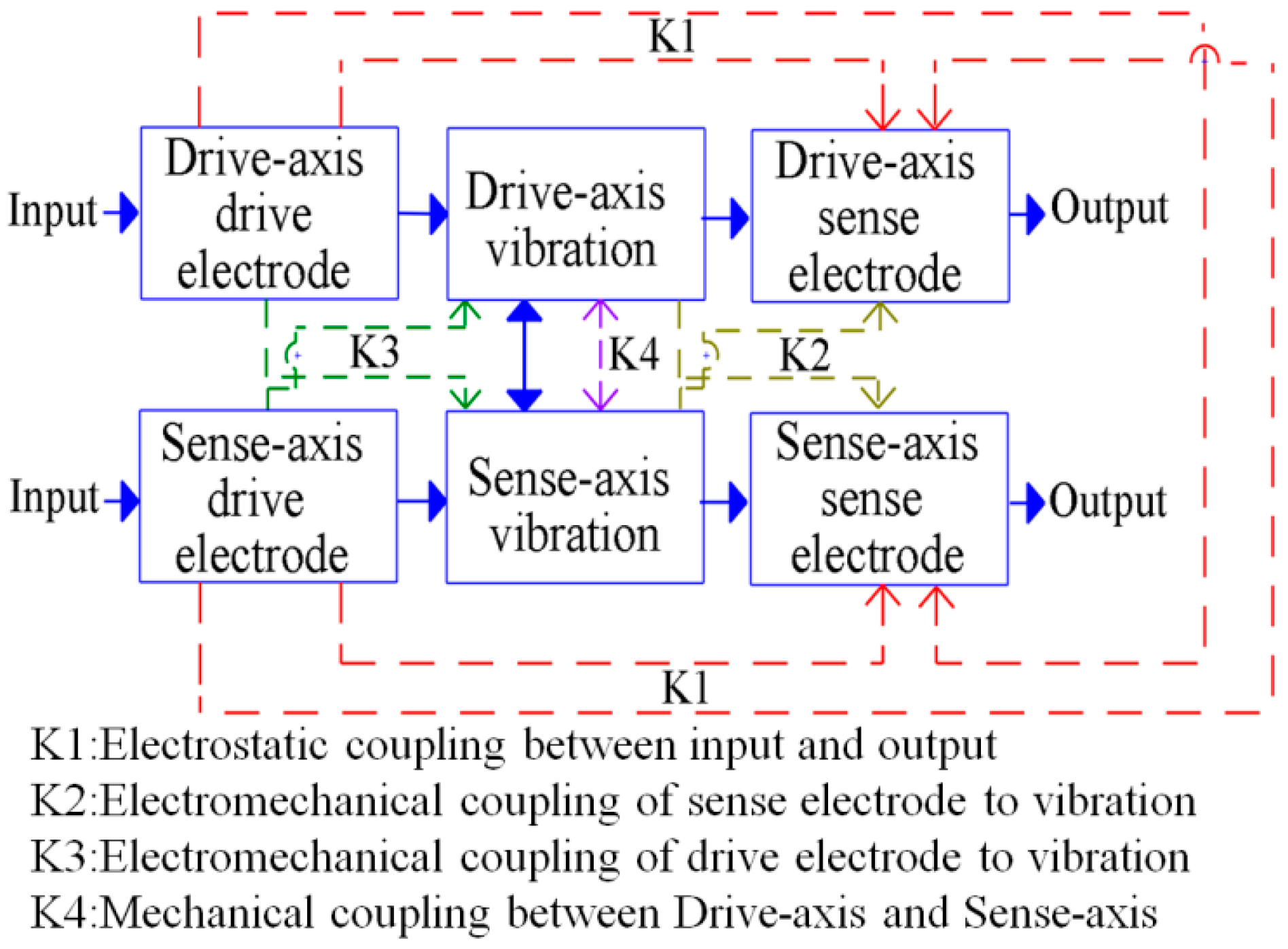
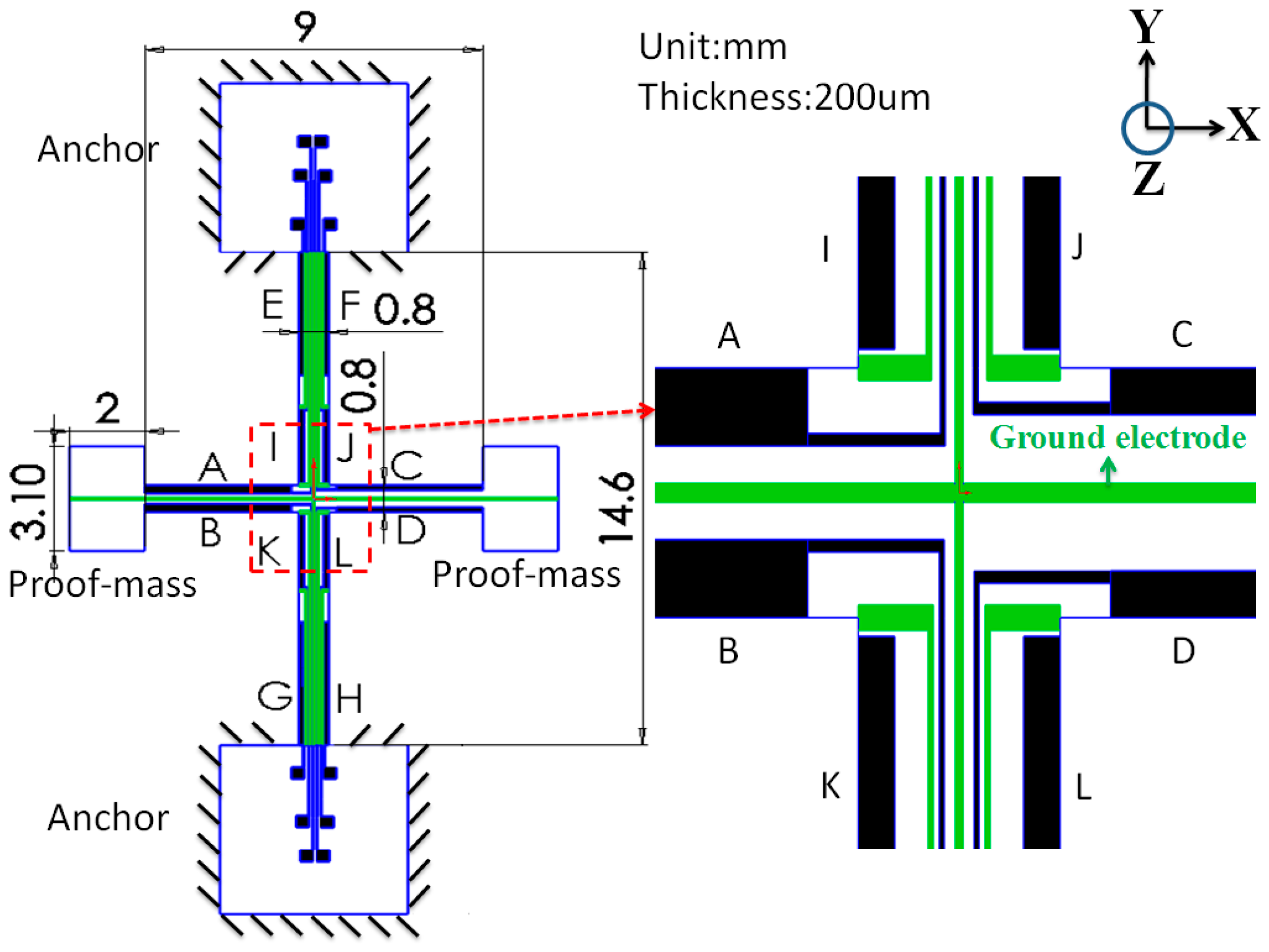
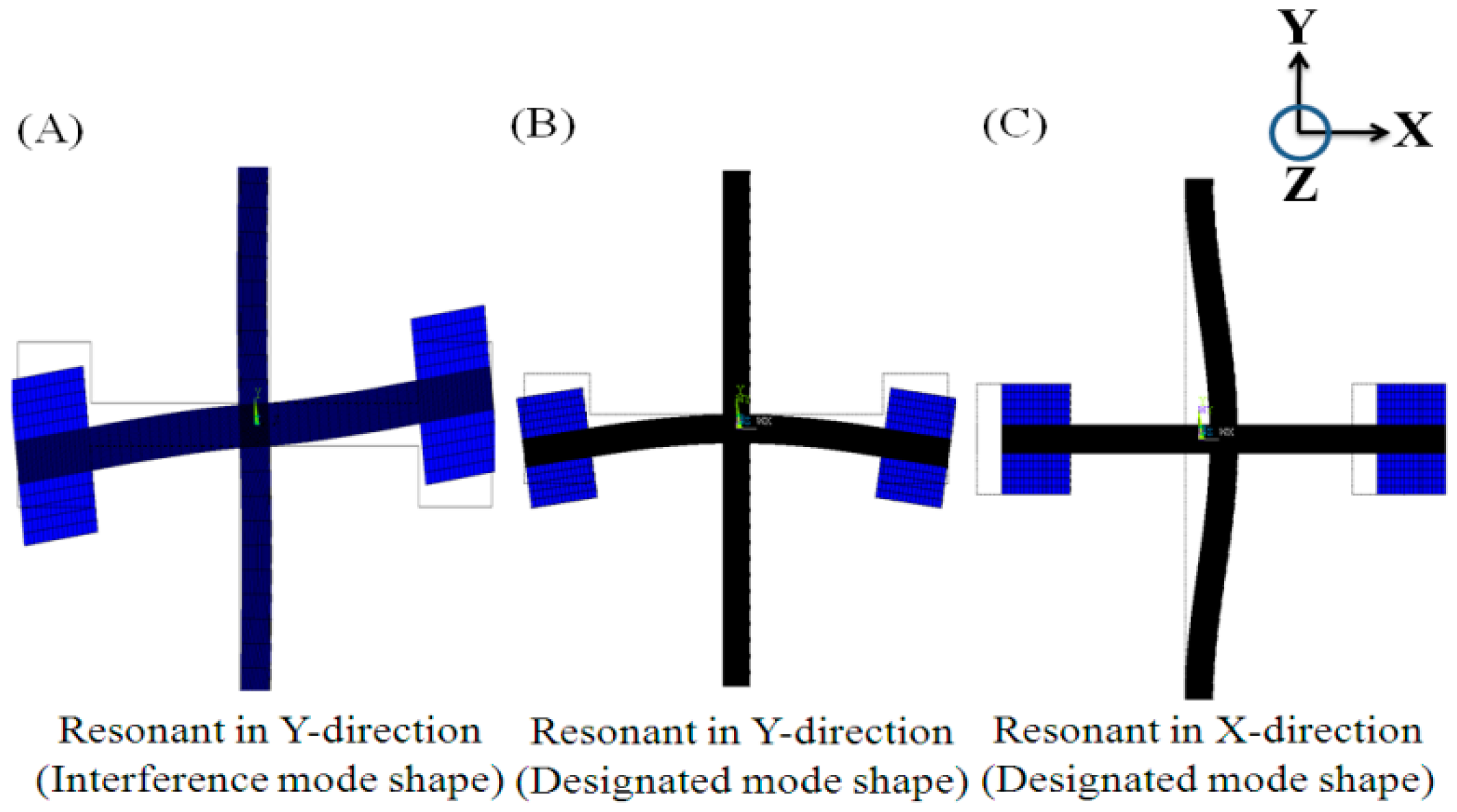





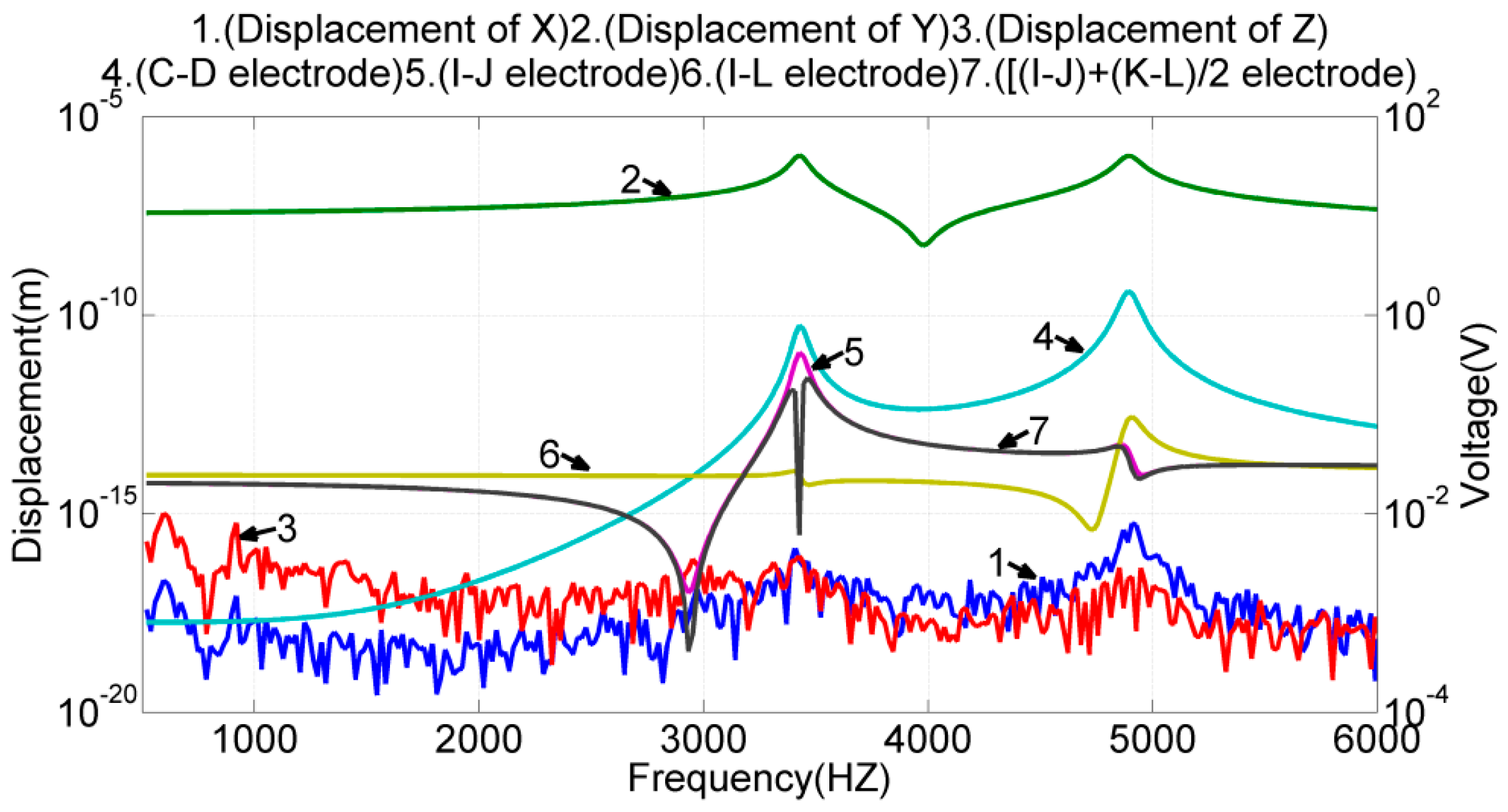
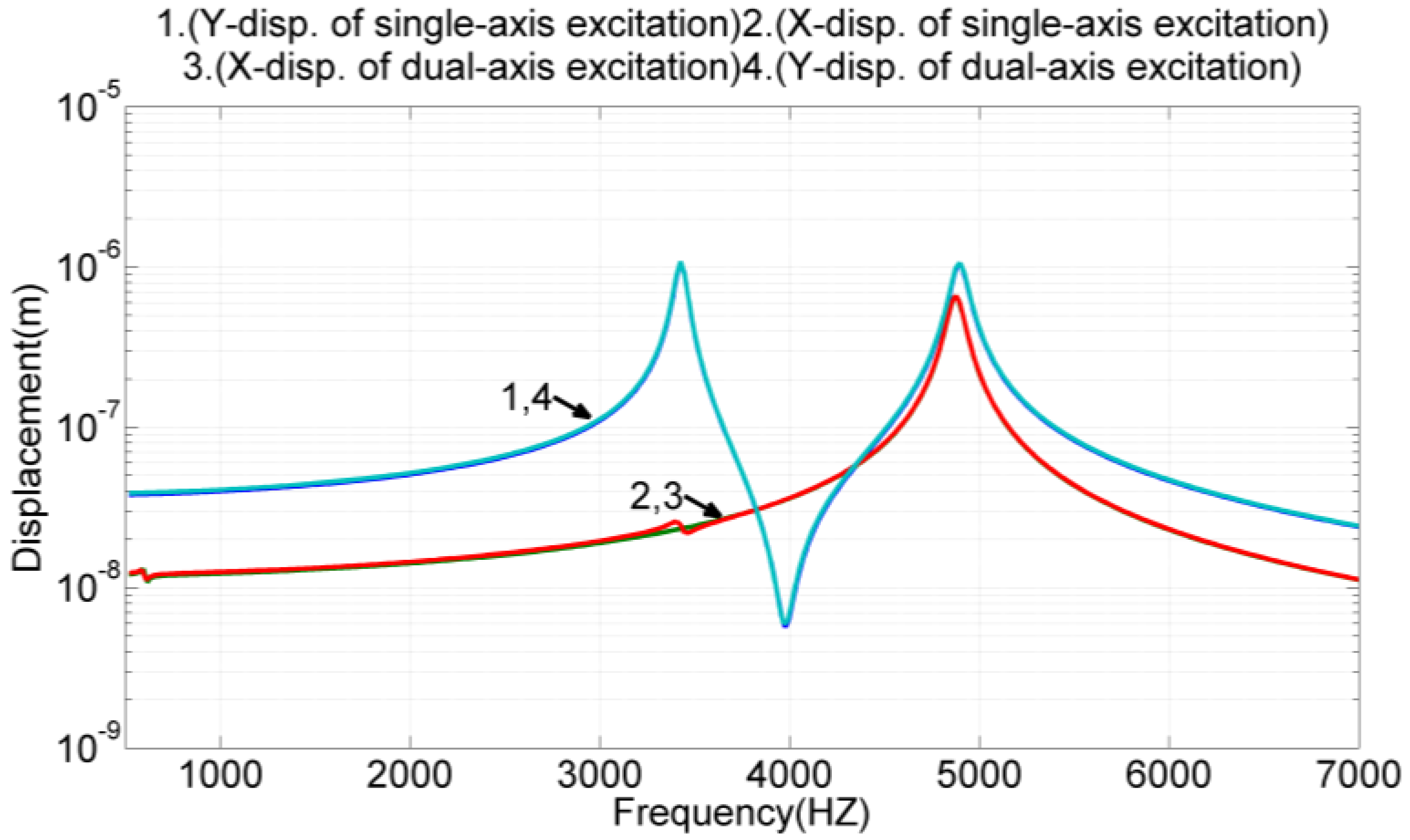
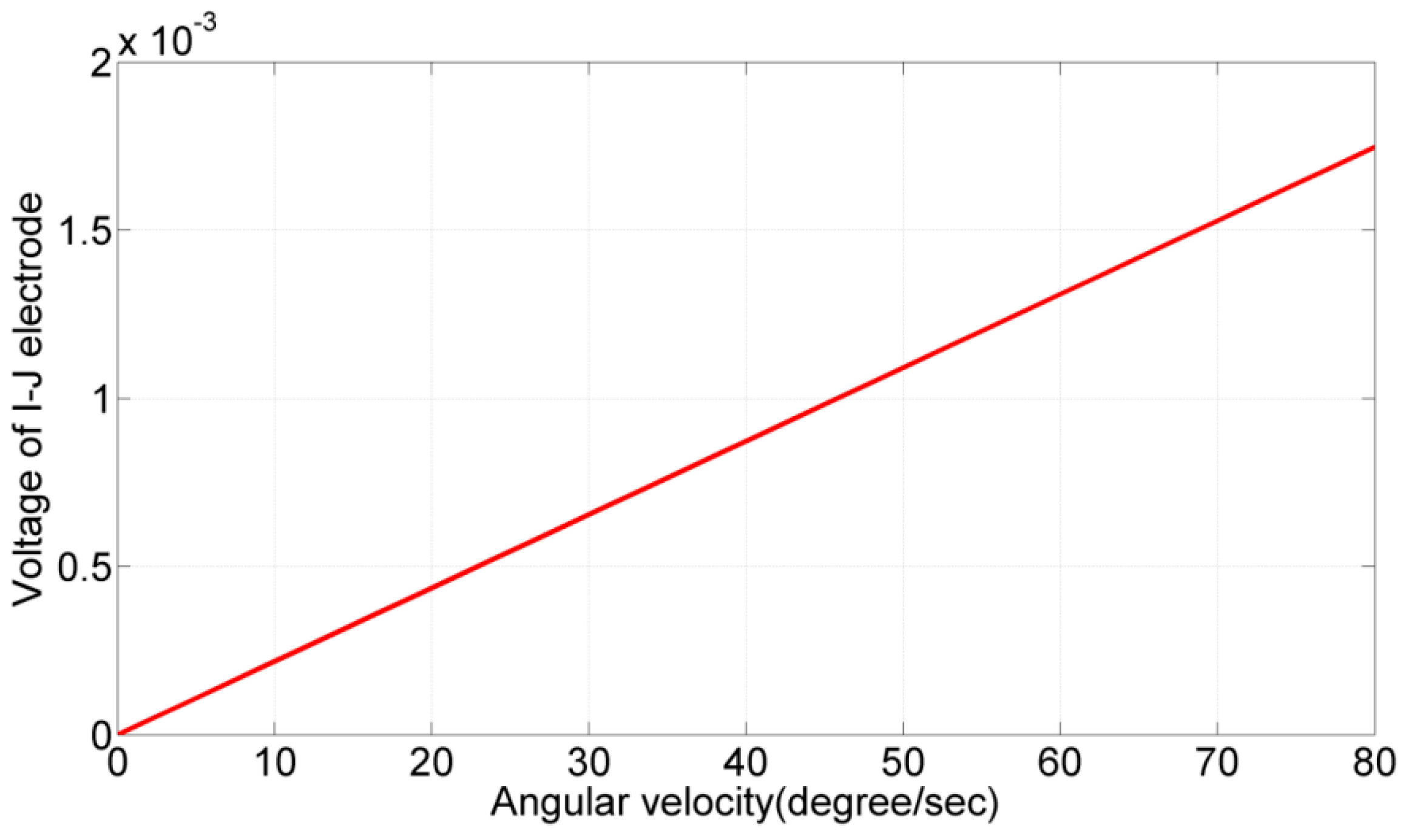
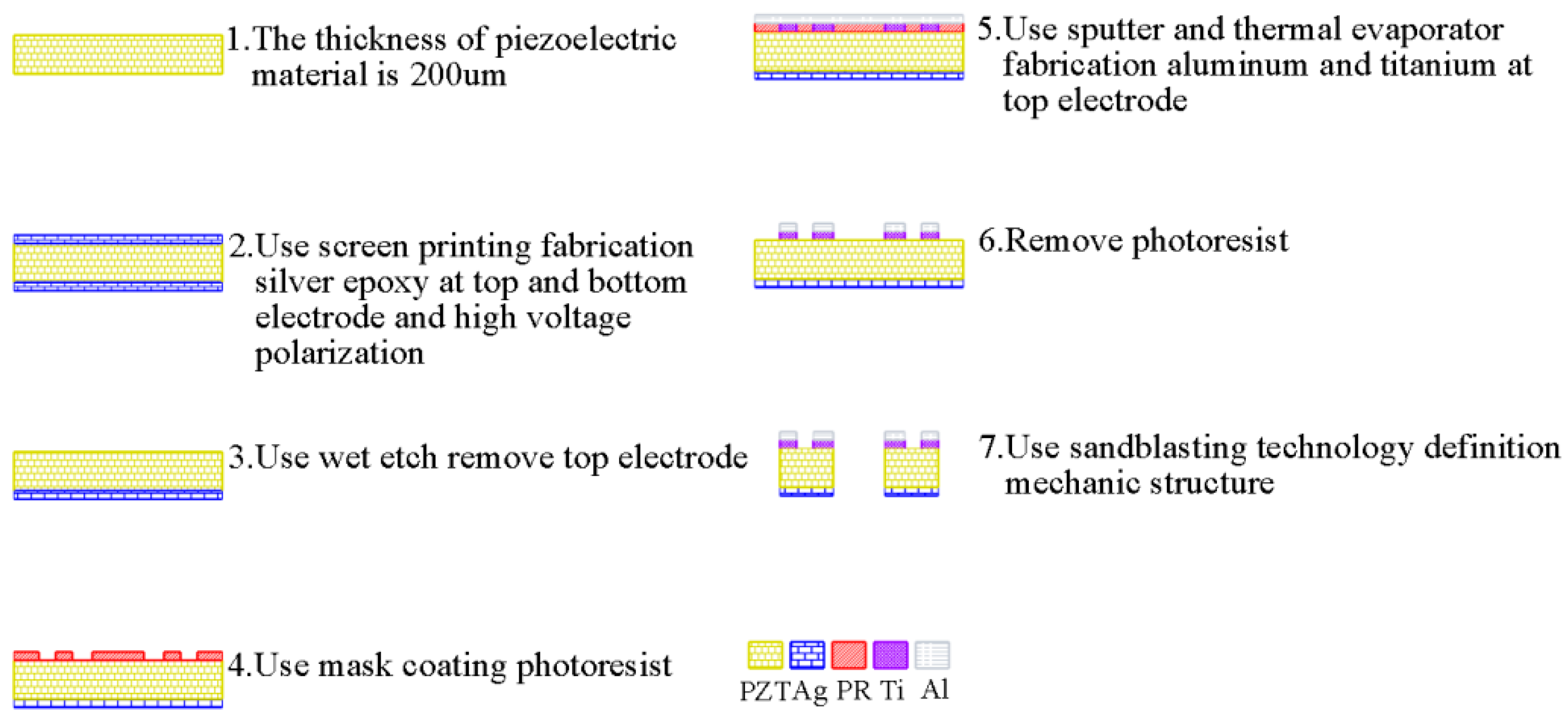
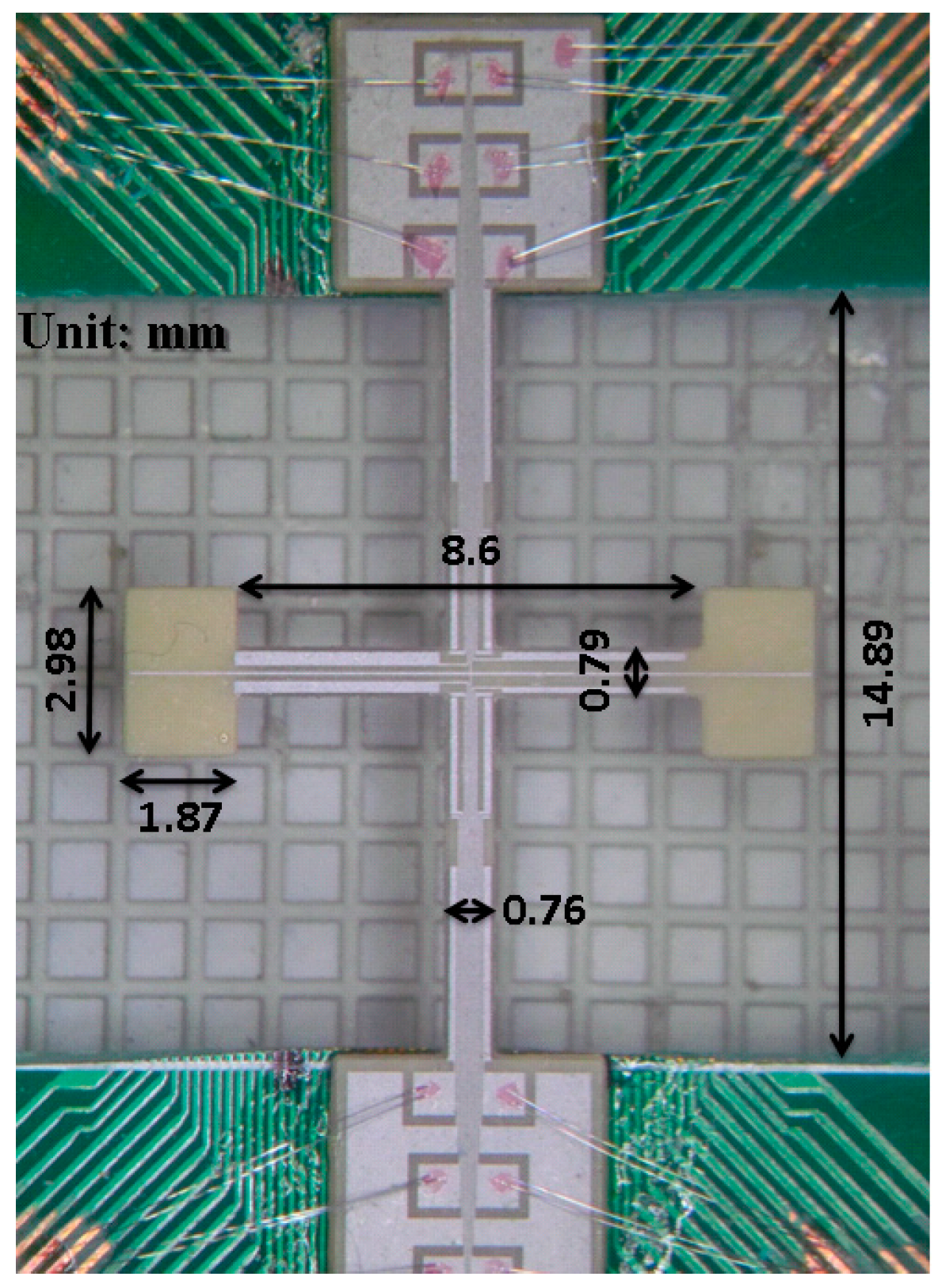

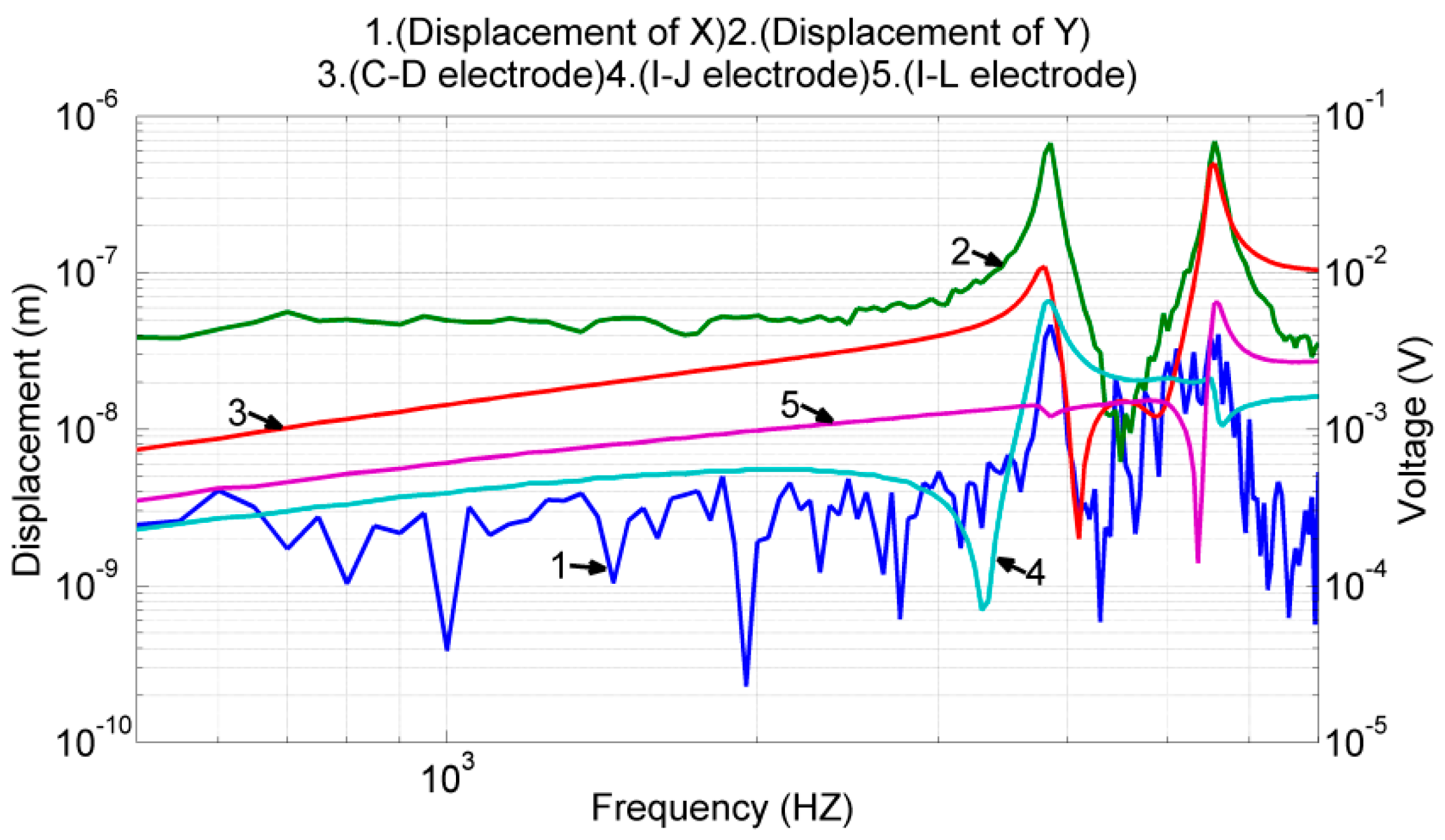
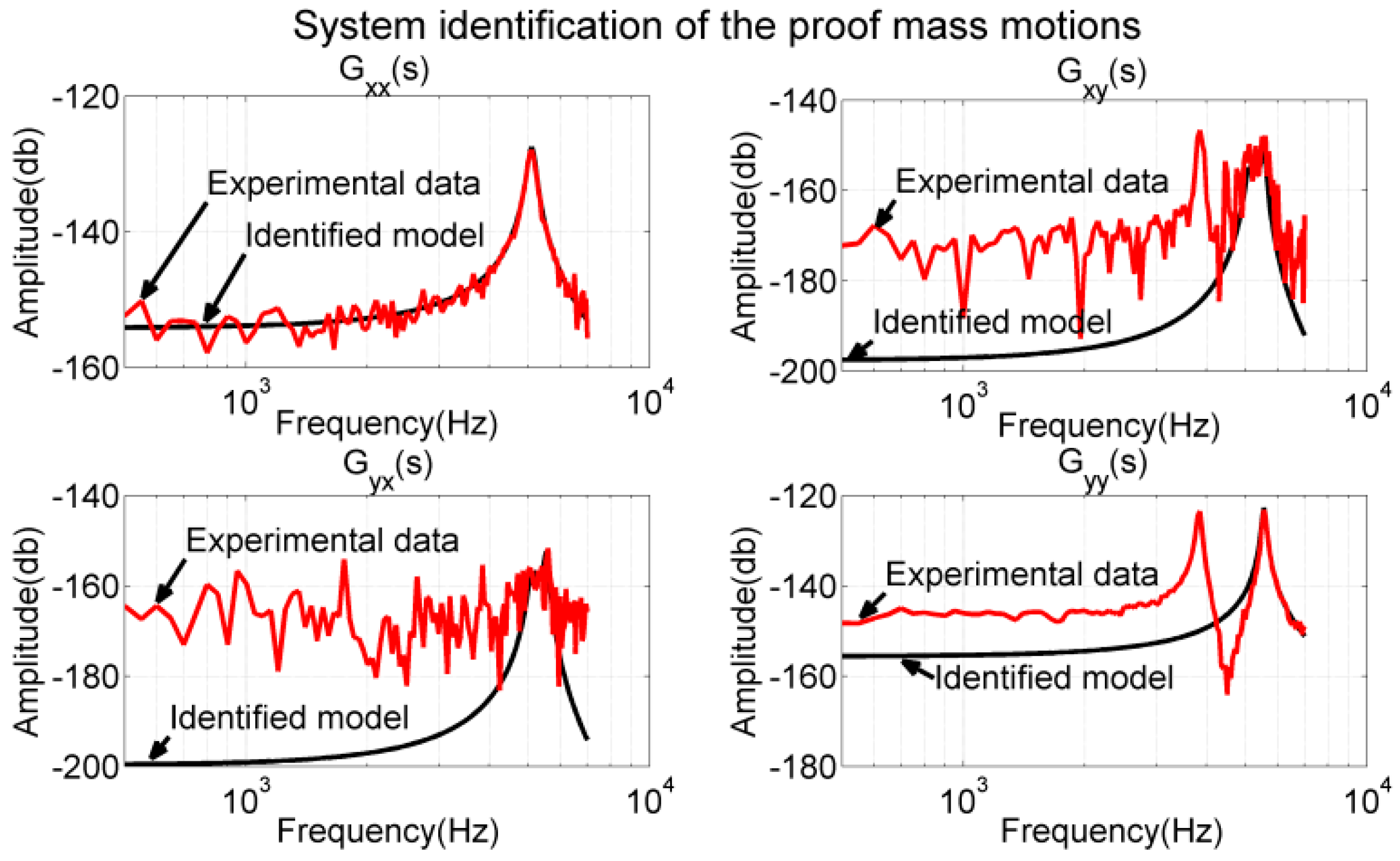
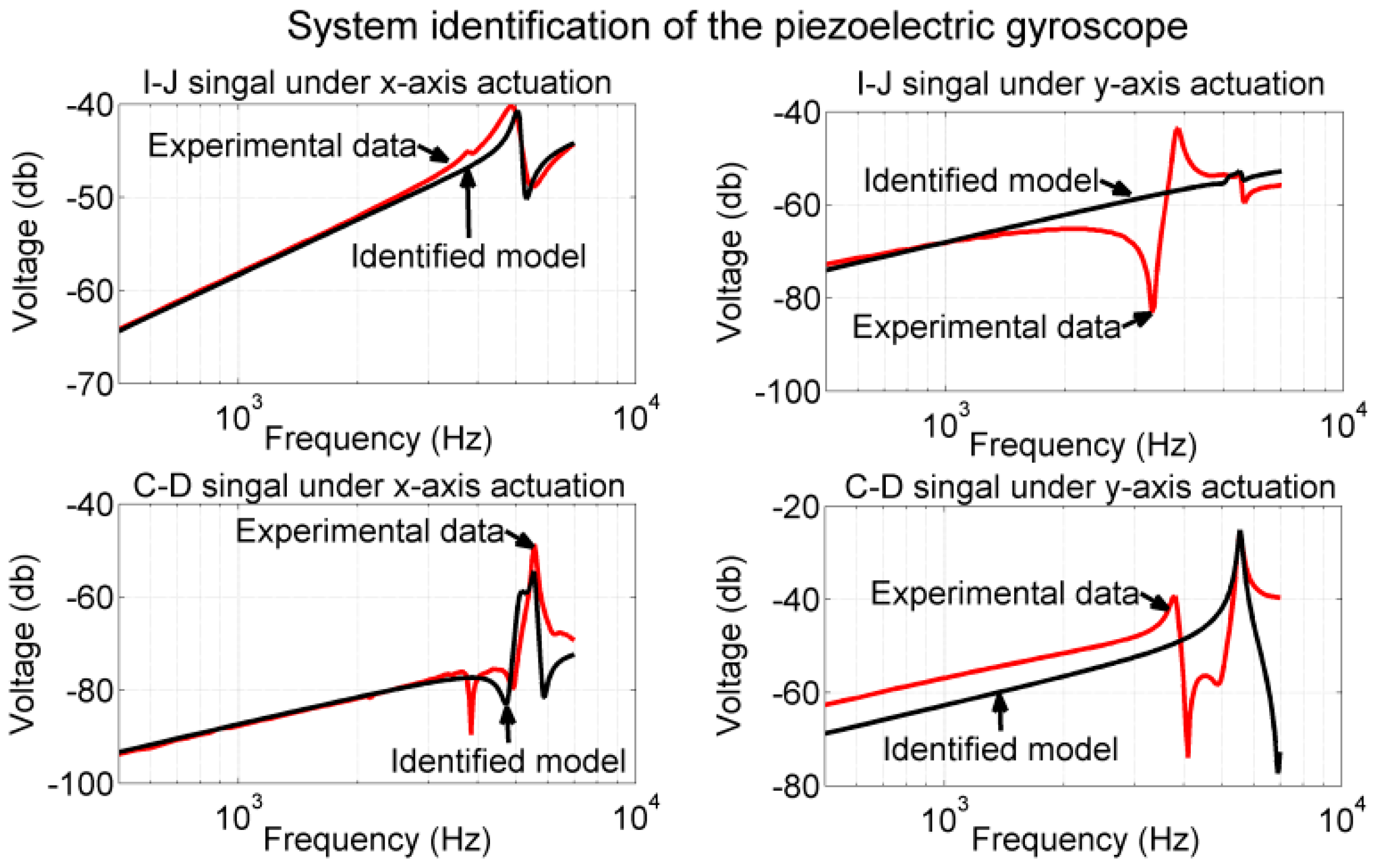
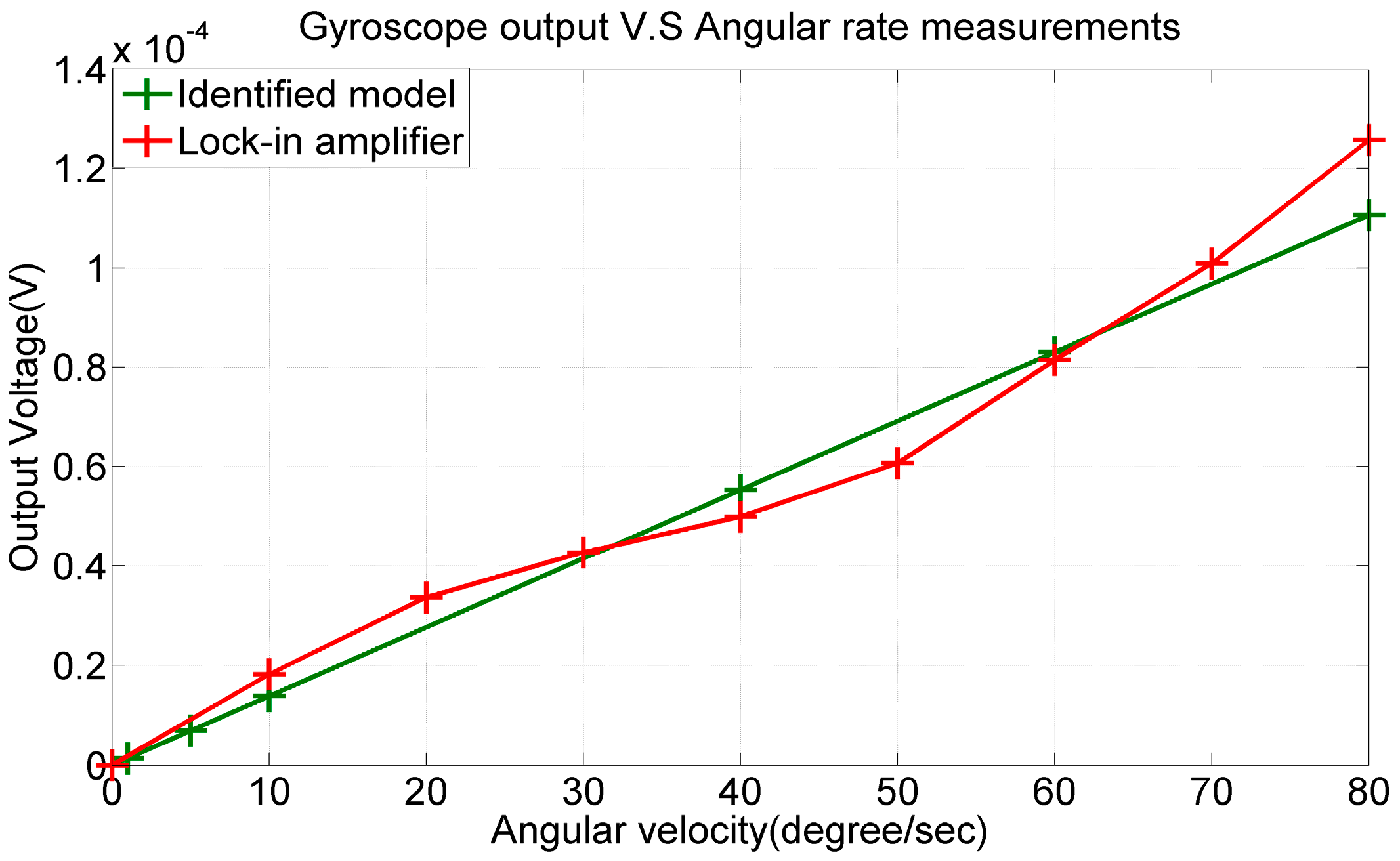
| Mode Shape | Resonant Frequency (Hz) |
|---|---|
| Interference mode shape in Y-direction | 3428 |
| Designated mode shape in Y-direction | 4893 |
| Designated mode shape in X-direction | 4908 |
© 2017 by the authors. Licensee MDPI, Basel, Switzerland. This article is an open access article distributed under the terms and conditions of the Creative Commons Attribution (CC BY) license (http://creativecommons.org/licenses/by/4.0/).
Share and Cite
Chang, C.-Y.; Chen, T.-L. Design, Fabrication, and Modeling of a Novel Dual-Axis Control Input PZT Gyroscope. Sensors 2017, 17, 2505. https://doi.org/10.3390/s17112505
Chang C-Y, Chen T-L. Design, Fabrication, and Modeling of a Novel Dual-Axis Control Input PZT Gyroscope. Sensors. 2017; 17(11):2505. https://doi.org/10.3390/s17112505
Chicago/Turabian StyleChang, Cheng-Yang, and Tsung-Lin Chen. 2017. "Design, Fabrication, and Modeling of a Novel Dual-Axis Control Input PZT Gyroscope" Sensors 17, no. 11: 2505. https://doi.org/10.3390/s17112505





